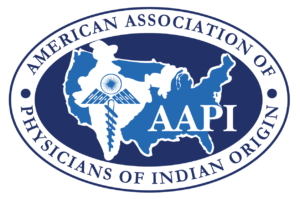- (630) 990 2277
- info@2022.aapiusa.org
FIND A FREE &
CHARITABLE CLINIC
PLEASE DONATE FOR COVID-19 AAPI DONATE A MASK PROGRAM
SMALL BUSINESS GUIDE
TO CARES ACT
FAQ
(Courtesy RWJMS)
What is a novel coronovirus? What is COVID-19?
A novel coronavirus is a new coronavirus that has not been previously identified. The virus causing coronavirus disease 2019.
(COVID-19) is not the same as the coronavirus that commonly circulates among humans and cause mild illness like the common cold.
Coronavirus (COVID-19) is a respiratory illness that can spread from person to person that was first identified in Wuhan, China.
Who is most at risk for catching COVID-19?
Much like the flu, individuals with compromised immune systems are at a higher risk for catching COVID-19, including the elderly and those with serious medical conditions. If you are generally in good health, the risk for contracting COVID-19 is
How does COVID-19 spread?
The virus is now spreading from person-to-person. It’s important to note that person-to-person spread can happen on a continuum. Some viruses are highly contagious (like measles), while other viruses are less so.
The virus that causes COVID-19 seems to be spreading easily and sustainably in the community (“community spread”) in some affected geographic areas.
What are the symptoms of COVID-19?
Patients with COVID-19 have mild to severe respiratory illness symptoms including:
- Fever
- Cough
- Shortness of breath
How can you prevent catching COVID-19?
- Wash hands often with soap and water for 20 seconds or more
- If soap and water is not available, use hand sanitizer with at least 60% alcohol
- Avoid touching your eyes, nose or mouth
- Stay home if you are sick
- Avoid contact with people who are sick
- Cover your mouth and nose with a tissue or sleeve when coughing or sneezing
- Clean and disinfect frequently touched objects and surfaces using a regular household cleaning spray or wipe
Should I wear a facemask?
The CDC does not recommend that people who are well use a facemask to protect themselves from respiratory diseases, including COVID-19.
Should I cancel my trip?
CDC provides recommendations on postponing or canceling travel. These are called travel notices and are based on assessment of the potential health risks involved with traveling to a certain area. A list of destinations with travel notices is available at:
https://www.cdc.gov/coronavirus/2019-ncov/travelers/index.html.
Will warm weather stop the outbreak of COVID-19?
It is not yet known whether weather and temperature impact the spread of COVID-19. Some other viruses, like the common cold and flu, spread more during cold weather months but that does not mean it is impossible to become sick with these viruses during other months. At this time, it is not known whether the spread of COVID-19 will decrease when weather becomes warmer. There is much more to learn about the transmissibility, severity, and other features associated with COVID-19 and investigations are ongoing.
How long is the incubation period?
Symptoms of COVID-19 can appear 2-14 days after exposure.
Where can I get tested for COVID-19?
If believe you may have come in contact with someone with COVID-19 or are exhibiting mild symptoms and want to be tested for the virus, please speak with your primary healthcare provider. Your doctor will determine your need for testing and your treatment options depending on the severity of the situation.
Should I just go to a hospital for testing?
Do not go to your nearest emergency room or urgent care center seeking testing. Call your primary healthcare provider first to assess the situation, unless you are having a true medical emergency.
What if I test positive for COVID-19? How is COVID-19 treated?
If you test positive for COVID-19, you should stay home and avoid contact with others to avoid further spread of the virus. There is no specific antiviral treatment recommended for COVID-19. People with COVID-19 should receive supportive care to help relieve symptoms. For severe cases, treatment should Include care to support vital organ functions.
